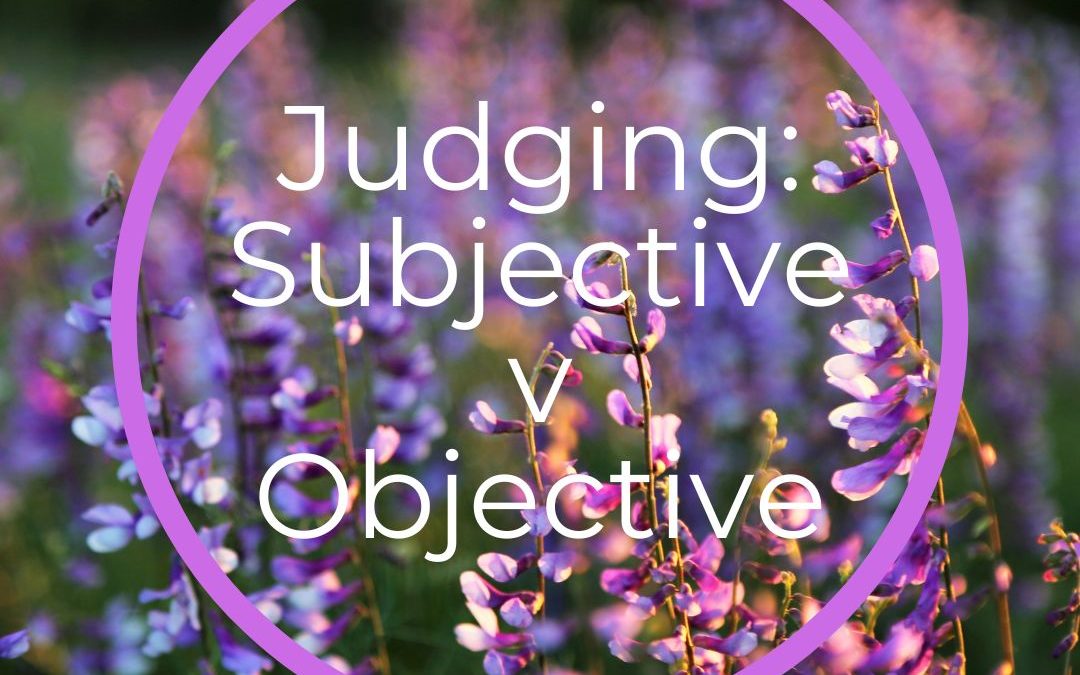Subjective and objective are two words filled significantly with huge meanings – especially when it comes to the textile arts and judging.
Subjective refers to our personal tastes, feelings, and views, whereas objective refers to our not being influenced by those things, looking at things without those personal parameters.
Now that’s a huge and opposing shift.
Apply that to judging embroidery and textile art and I think those two words suddenly make a lot more sense.
And I have to say, in my opinion, quilters are way more over this topic than embroiderers.
Quilt shows now attract huge sponsorship dollars worldwide – all of which help entice entries, foster competition and help promote the quilting arts.
Good things, if handled correctly, but not so good if subjective views and thoughtless comments are allowed to flourish, lowering the professionalism of these events.
The American National Association of Certified Quilt Judges alludes to this on their website by noting the following: ‘there was a confluence of realization and determination in the 1960s that the judging of textiles in competitions should be by objective criteria. For too long, judges relying on personal experiences and preferences had been prone to the subjective selection of prizewinners. There was growing concern that the crafting and art of textile work were becoming stagnant.’
They saw a problem and they fixed it. Kudos to them.
With a new set of judging criteria, they named themselves the National Quilting Association and held their first show in September of 1970.
And so the story of objective judging for quilts began.
People trained in the fields of fabric construction, textile and fibre history, and textile and fibre arts were chosen to judge.
What also began, was an emphasis on judging education and training as well as providing feedback via positive critiques.
So the essence was to encourage people to make, create and exhibit their work, knowing that objectivity was being employed in all judging criteria.
And apparently, these procedures were in use up till 2009 – and that in itself, says a lot.
There’s no doubt that offering judged quilt exhibitions helps improve quilting standards along with the quality of entries, but it also helps educate and inspire a new generation of quilters coming through.
Now I know judging education in the quilting arts in Australia has reached a similar highly educative standard as I’ve participated in workshops and education programmes presented by highly trained international and Australian judges.
I don’t believe the same can be said for embroiderers. As far as I know, there’s no cohesive networking happening whereby there’s a unified set of criteria or educational standards used Australia-wide, in line with international standards. Nor do they exhibit as frequently as Quilt groups and Guilds appear to do, so there are not so many training opportunities for the trial, application, and improvement of judging skills.
One weekend workshop does not a judge make.
Judging objectively is a confluence of ideals; it’s about promoting and raising standards wherever possible, and ensuring that judging criteria are adhered to so that sponsors’ funding is allocated fairly.
But it’s also about being professional and using a vocabulary that lifts and nurtures and doesn’t annihilate and deflate.
In essence, judged exhibitions could be seen through the lens of bettering our own work.
It’s also about supporting the organisations that create an opportunity to exhibit, adjudicated by a fair judging forum.
Most of all though, it’s about supporting and encouraging makers and creators to exhibit and show their expertise and innovation, through their use of technique and tradition.
So those two little words, subjective v objective, looked at in that light, suddenly become hugely important and hugely relevant.
There’s nothing worse than seeing enthusiasm crushed – and there’s nothing better than seeing talent soar.
As it should.

All views expressed are my own personal views and opinions, except where acknowledged information is included from other sources.

